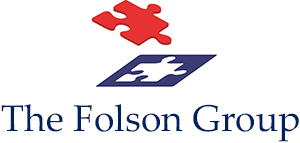NYC Co-op & Condo Budgeting
Avoid the Year-End Scramble with Smart Planning
Imagine owning a business. You only look at your finances once a year — in Q4 — and you never think about future growth, upcoming expenses, or risks.
Would that business thrive?
Probably not.
Yet that’s exactly how many co-op and condo boards handle their buildings’ budgets.
Your building isn’t just a place to live — it’s a multi-million-dollar business. If you owned a company with that kind of value, you’d have a five-year plan, cash flow projections, reserves for big expenses, and a growth strategy.
At The Folson Group, we help boards run their buildings like businesses. That means ditching outdated budgeting habits and thinking strategically. Here are the biggest budgeting myths we see every year — and how to replace them with proactive practices that give your board more time, reduce stress, and keep residents informed.
❌ Myth 1: “We can’t do our budget until Q4.”
Why boards believe it
Boards and property managers often think they must wait until fall because they’re waiting for “final numbers” from vendors, insurance carriers, utilities, or tax assessments.
Why this is wrong
No successful business waits until Q4 to plan payroll, inventory, or investments. They forecast — using data, trends, and professional insight — so they’re ready to make smart decisions year-round.
Most of your building’s cost drivers — labor contracts, insurance renewals, utilities — can be reasonably forecast months in advance. Waiting until Q4 just compresses the timeline, leading to rushed decisions and frazzled owners.
What to do instead
Ask your property manager for a mid-year budget forecast right after the June closeout. This “early view” gives your board time to:
Plan maintenance increases or assessments with more notice for residents
Shop for better vendor pricing and renegotiate contracts before renewals
Approve the budget thoughtfully, not in a year-end scramble
Business analogy: It’s like cash flow planning. Smart businesses adjust their spend mid-year to avoid a crunch. Your building can do the same — but only if you start earlier.
❌ Myth 2: “We can only budget year by year.”
Why boards believe it
They treat budgeting as an annual administrative chore rather than a strategic planning exercise.
Why this is wrong
No well-run business makes decisions one year at a time. Companies plan hiring, product launches, and capital investments years ahead.
Your building faces predictable big-ticket items: façade repairs, boiler or roof replacements, elevator modernizations, and Local Law 97 compliance. These don’t appear out of thin air — you know they’re coming.
What to do instead
Create a rolling 3- to 5-year budget that includes:
Operating expenses: Labor, insurance, utilities
Capital projects: Façade cycles, major system replacements, Local Law compliance
Reserve contributions: A healthy reserve target over time
Anticipated assessments: Smoothed out to avoid shocking residents
Tips for success
Review at least 3–5 years of actuals to spot trends
Map out known Local Law deadlines and big-ticket projects
Run “what if” scenarios for insurance spikes or early equipment failures
Business analogy: It’s your 5-year business plan — just tailored to your building.
❌ Myth 3: “Budgeting is just about next year’s numbers.”
Why boards believe it
They think their job is to simply “cover the bills” for the next 12 months.
Why this is wrong
Strong businesses don’t just cover bills — they invest, plan for growth, and build reserves to weather downturns.
Boards that only focus on one year often face:
Surprise assessments
Emergency loans at high interest rates
Deferred maintenance that costs more in the long run
What to do instead
Think of your budget as a financial strategy, not just a spreadsheet. A proactive, multi-year approach helps the board:
Meet fiduciary duties
Keep the building affordable and predictable for residents
Maintain and grow property values
Real-world example: We helped a building shift from reactive, one-year budgets to a 5-year rolling plan. They phased a $500,000 project over several years instead of slamming residents with a massive assessment. Buyers noticed — property values rose because the building looked financially strong.
🌟 The Benefits of Long-Term, Proactive Budgeting
When you run your building like a business, you unlock:
Predictability: Fewer surprise assessments or last-minute fee hikes
Lower costs: More lead time = better vendor bids and smarter project timing
Healthier cash flow: Align projects for times when reserves are strongest
Confident decision-making: No more reactionary meetings under pressure
Higher property values: Buyers and lenders prefer financially stable buildings
🛠 How to Get Started
Mid-year forecast: After June closeout, request a preliminary budget from management.
Board workshop: Dedicate a summer meeting to reviewing forecast variances and capital needs.
Vendor strategy: Use Q3 to renegotiate contracts and run bids while you still have time.
Rolling plan: Build a 3–5 year budget with operating, capital, and reserve targets.
Owner communication: Share early projections so residents aren’t blindsided.
Annual refresh: Update the plan every year, as a business revises its projections.
📅 A Smarter Budget Timeline
| Timeframe | Focus | Benefit |
|---|---|---|
| Jan–June | Vendor reviews | Stronger pricing leverage |
| July–Aug | Mid-year forecast | Early warnings, prep time |
| Aug | Draft budget | Thoughtful review |
| Sep | Approve budget | Smooth rollout |
| Oct | Refine & communicate | Owners informed |
💡 The Bottom Line
Your building is a business — and should be managed like one.
The year-end scramble doesn’t have to be the norm. By starting earlier, planning longer, and thinking strategically, your board can protect financial health, reduce surprises, and keep your building affordable, safe, and sustainable.
👉 If your board wants help with building a proactive budgeting process, let’s talk.
The Folson Group specializes in making your building run like a business — with budgets that reduce stress and build long-term stability.

